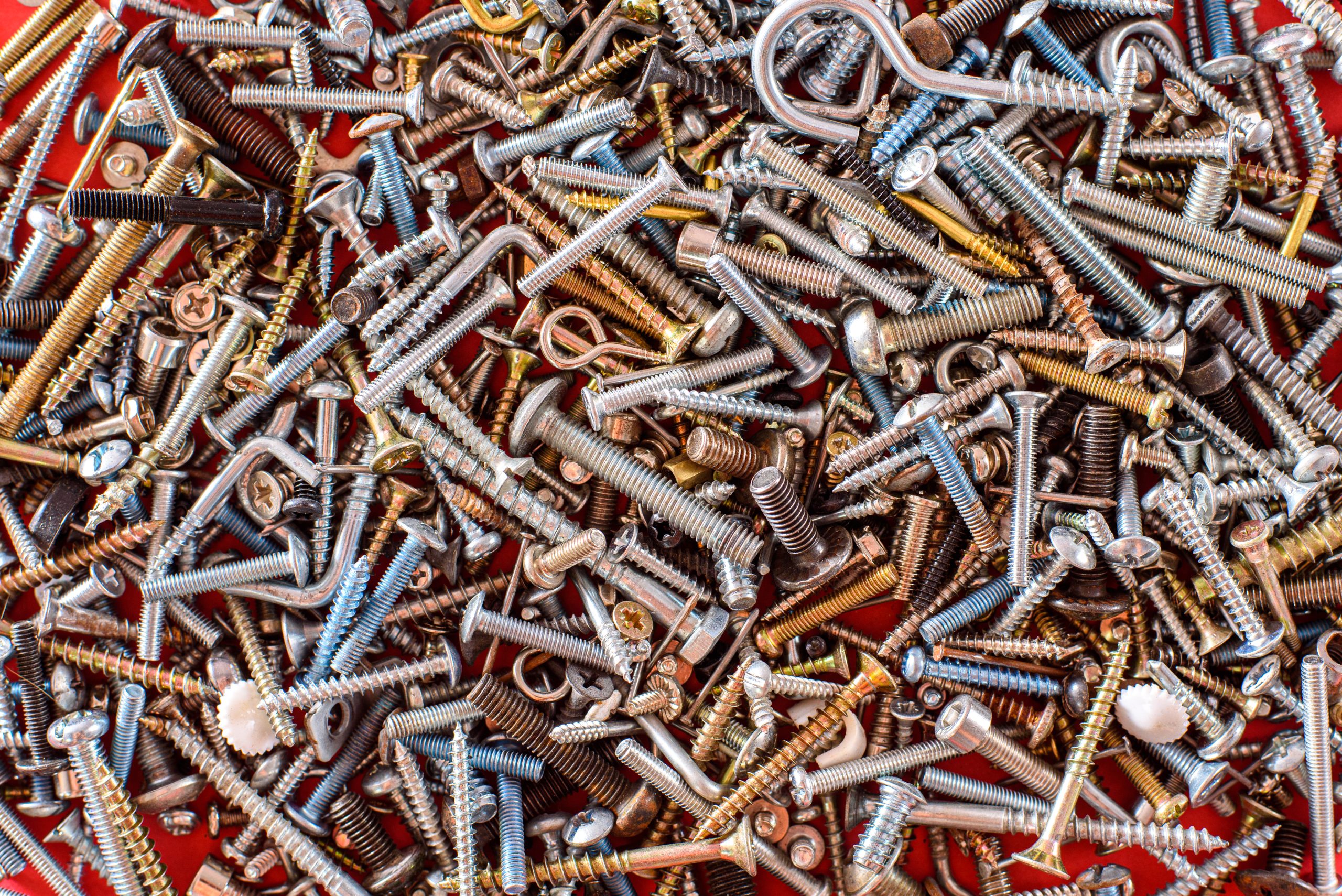
The most common types of tamper-resistant screws are: one-way screws, spanner screws and a tamper-resistant variation of Allen-head screws with a protruding pin that keeps regular Allen wrenches from working. Let’s consider how tamper-proof they actually are.
A one-way screw has counter-clockwise ramps in the screw’s head. A screw-driver turned clockwise engages the screw-head and forces it to rotate, but a screw-driver turned counter-clockwise slides up the ramps and accomplishes nothing. The intention is that the screws can be installed with a standard screw-driver but cannot be easily removed without a special removal tool that digs into the ramps to get a good grip. One-way screws are relatively easy to remove with a standard flat-head screw-driver. All one has to do is push hard while turning counter-clockwise.
A spanner screw has two small holes drilled in its head and is designed to be installed and removed with a special spanner screw-driver. A screwdriver and a small hammer can be used to exploit the holes, tapping the screw-head counter-clockwise to loosen the screw. This method leaves gouges in the edges of the holes. If one or both holes are gouged like this, then it has obviously been tampered with.
A tamper-resistant Allen-head screw is designed to be removed only with a specially modified Allen wrench having a small hole drilled in its end to accept the protruding pin in the head of the screw. However, it can be loosened with the pliers of a common multi-tool. The teeth of the pliers will leave marks that can be seen upon close examination of the screw.
Tamper-resistant screws are far from tamper proof. But, although tamper-resistant screws provide only a moderate level of tamper-resistance, they provide clear evidence when they’re opened with standard hand tools. If the screw-heads are regularly inspected, then this tamper-evidence significantly increases the overall level of security provided by such screws. They are sufficient for relatively low-security applications that do not warrant the added expense of locks.


